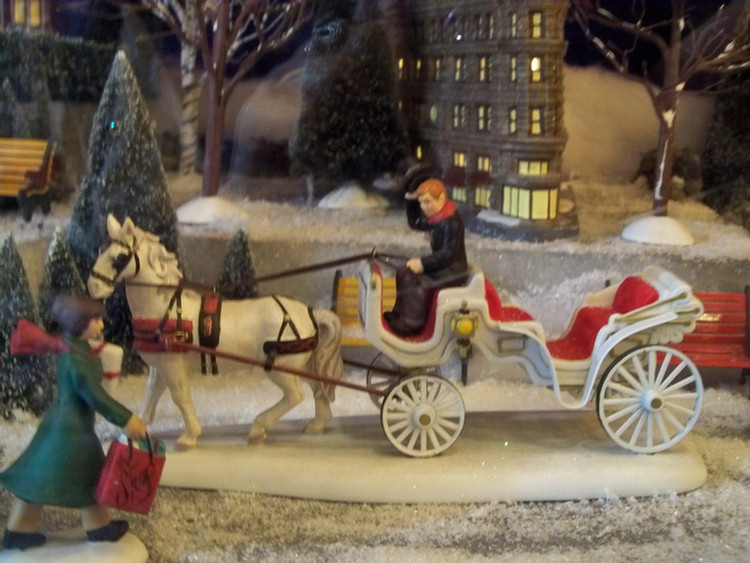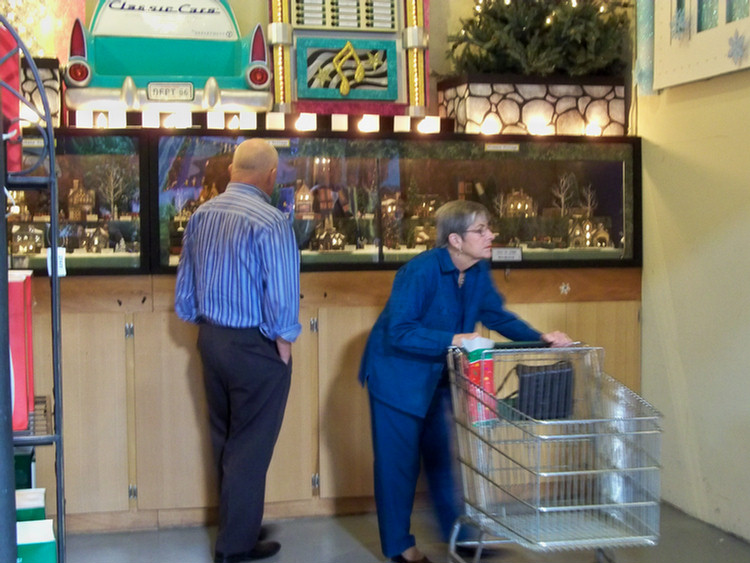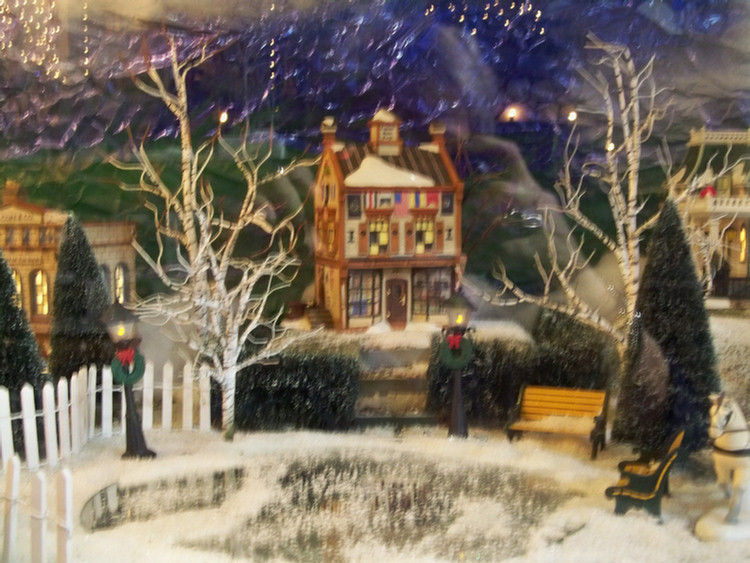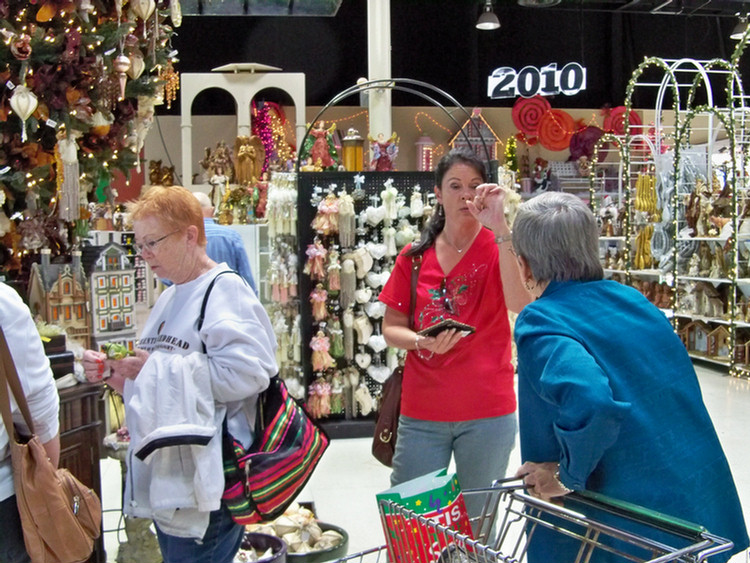11/29/2009 - A Time For A Quick Trip To Stats (Page Four)
It is day three the decoration activity. Sunday morning we went to Church and Jeanette was already there! Delightful surprise! We decided to go to Stats to look and see and voila, we found some "must haves" for the tree!
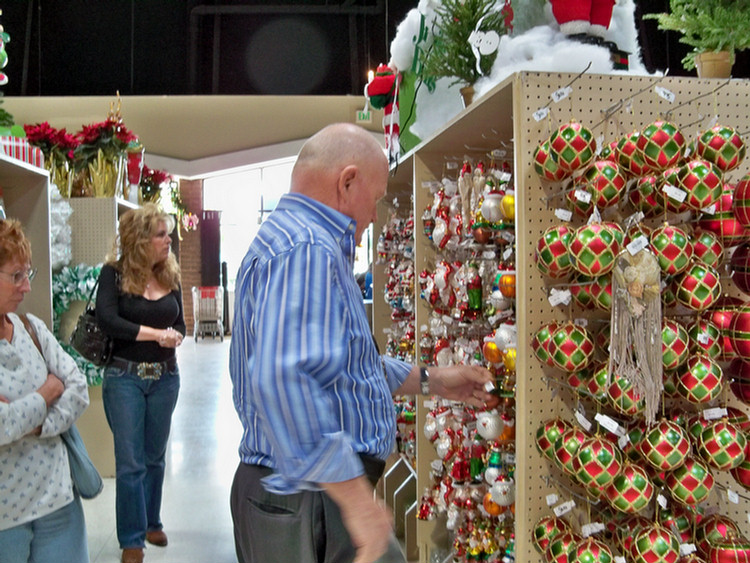
Paul finds a golf ornament for James
Did you know? - The first decorated trees were adorned with apples, strings of popcorn, white candy canes and pastries in the shapes of stars, hearts and flowers. Glass baubles were first made in Lauscha, Germany by Hans Greiner who produced garlands of glass beads similar to the popcorn strands and tin figures that could be hung on trees. The popularity of these decorations grew into the production of glass figures made by highly skilled artisans with clay molds.
The artisans heated a glass tube over a flame, then inserted the tube into a clay mold, blowing the heated glass to expand into the shape of the mold. The original ornaments were only in the shape of fruits and nuts.
After the glass cooled, a silver nitrate solution was swirled into it, a silvering technique developed in the 1850s by Justus von Liebig. After the nitrate solution dried, the ornament was hand-painted and topped with a cap and hook.
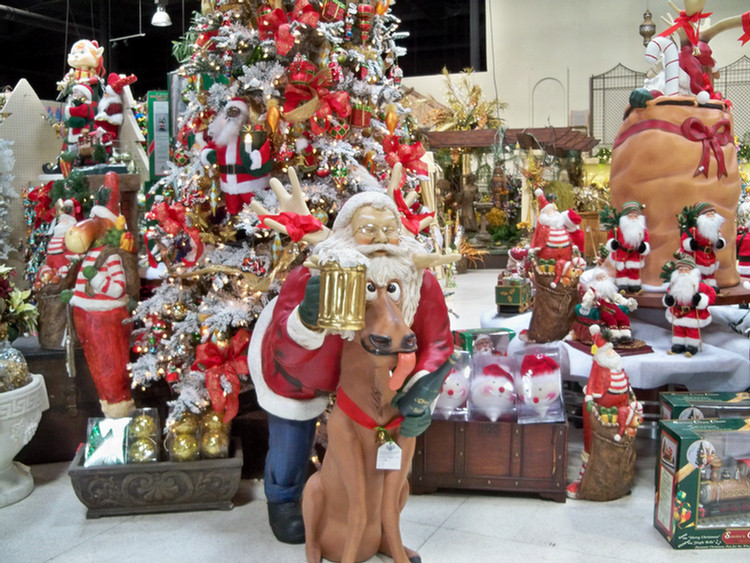
Carri found the beer
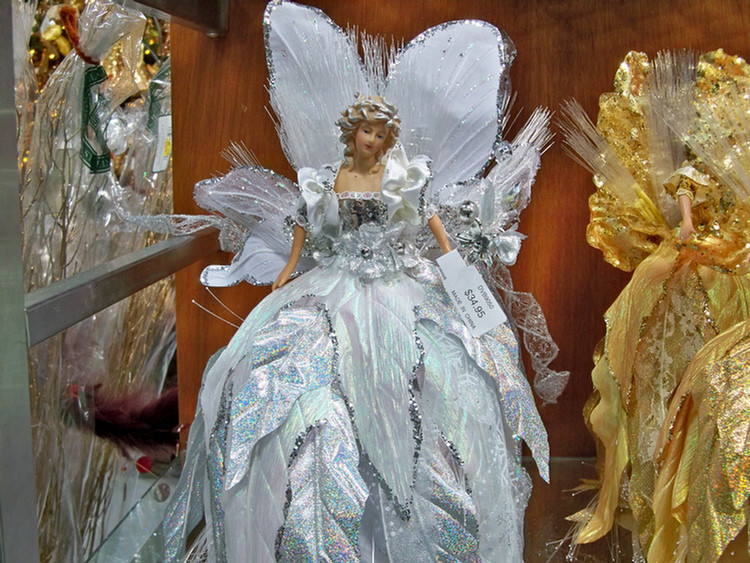

Zoom... She is on a mission
Did you know? - One of the first shopping carts were introduced on June 4, 1937, the invention of Sylvan Goldman, owner of the Humpty Dumpty supermarket chain in Oklahoma City (another shopping-cart innovator was Orla Watson). One night, in 1936, Goldman sat in his office wondering how customers might move more groceries[citation needed]. He stared idly at a wooden folding chair. Put a basket on the seat and wheels on the legs. Goldman and one of his employees, Fred Young a mechanic, began tinkering. Their first shopping cart was a metal frame that held two wire baskets.
Since they were inspired by the folding chair, Goldman called his carts "folding basket carriers". Another mechanic, Arthur Kosted, developed a method to mass produce the carts by inventing an assembly line capable of forming and welding the wire. The cart was awarded patent number 2,196,914 on April 9, 1940 (Filing date: March 14, 1938), titled, "Folding Basket Carriage for Self-Service Stores". They advertised the invention as part of a new “No Basket Carrying Plan."
The invention did not catch on immediately. Men found them effeminate; women found them suggestive of a baby carriage. "I've pushed my last baby buggy," an offended woman informed him. After hiring several male and female models to push his new invention around his store and demonstrate their utility, as well as greeters to explain their use, shopping carts became extremely popular and Goldman became a multimillionaire. Goldman continued to make modifications to his original design, and the basket size of the shopping cart increased as stores realized that their customers purchased more as its size increased. Today, most big-box stores and supermarkets have shopping carts for the convenience of the shoppers.


